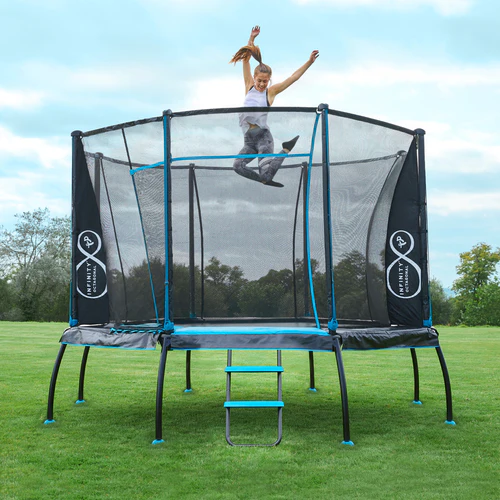
Big Fun, Small Space: Maximising Enjoyment with Compact Trampolines
In today’s world, where outdoor play is essential for children’s physical and mental well-being, the role of toys like trampolines cannot be overstated. However, when it comes to outdoor toys and trampoline safety, one crucial factor often overlooked is the size of the trampoline. In this article, we’ll delve into the significance of trampoline size, especially in compact spaces, and offer guidance on selecting the right one for your garden while prioritising safety.
The Importance of Trampoline Size
Trampoline size plays a pivotal role in both safety and enjoyment. While larger trampolines provide ample space for jumping and performing tricks, they may not be suitable for smaller gardens or limited outdoor spaces. On the other hand, compact trampolines, such as the trampoline 12ft and 6ft trampolines, offer an excellent solution for those with constrained areas without compromising on the fun factor.
Considerations for Compact Trampolines
When purchasing a compact trampoline, several factors come into play:
- Space Availability: Assess the dimensions of your garden or outdoor area to determine the maximum size of trampoline that can comfortably fit. Measure the available space, leaving some clearance around the trampoline for safety.
- Age of Users: Consider the age and size of the primary users of the trampoline. While smaller trampolines are suitable for younger children, older kids may prefer larger ones to accommodate their growing bodies and skill levels.
- Weight Capacity: Ensure that the trampoline’s weight capacity aligns with the intended users. Compact trampolines typically have lower weight limits compared to larger models, so it’s essential to verify this before making a purchase.
- Safety Features: Regardless of size, all trampolines should include safety features such as enclosure nets, padding, and sturdy frames. Check for certifications and reviews to ensure the trampoline meets safety standards.
Maximising Safety in Small Spaces
Even with compact trampolines, safety should remain a top priority. Here are some tips for ensuring a safe trampolining experience:
- Positioning: Place the trampoline on level ground away from obstacles such as trees, fences, or hard surfaces. Ensure there’s sufficient clearance above and around the trampoline to prevent collisions.
- Regular Inspections: Conduct routine inspections of the trampoline’s frame, springs, and padding to check for signs of wear or damage. Replace any worn components promptly to maintain safety standards.
- Supervision: Children should always be supervised while using the trampoline, regardless of size. Establish rules for safe trampolining, such as no somersaults or jumping near the edges.
- Limiting Users: Avoid overcrowding the trampoline, especially with multiple users of varying sizes. Limit the number of users according to the trampoline’s weight capacity to prevent accidents.
Future Growth Considerations
When purchasing a trampoline for children, it’s essential to consider their future growth. While a compact trampoline may suffice during their early years, they may outgrow it sooner than expected. To accommodate their physical development and evolving skills, you may need to upgrade to a larger trampoline eventually. Factor in this potential growth when selecting the size and features of the trampoline.
In conclusion, compact trampolines offer an excellent solution for maximising enjoyment in small outdoor spaces while prioritising safety. By considering factors such as space availability, user age, and safety features, you can select a trampoline that fits seamlessly into your garden while providing hours of fun for your children. Remember to prioritise safety at all times and anticipate future growth to ensure a rewarding trampolining experience for years to come.
